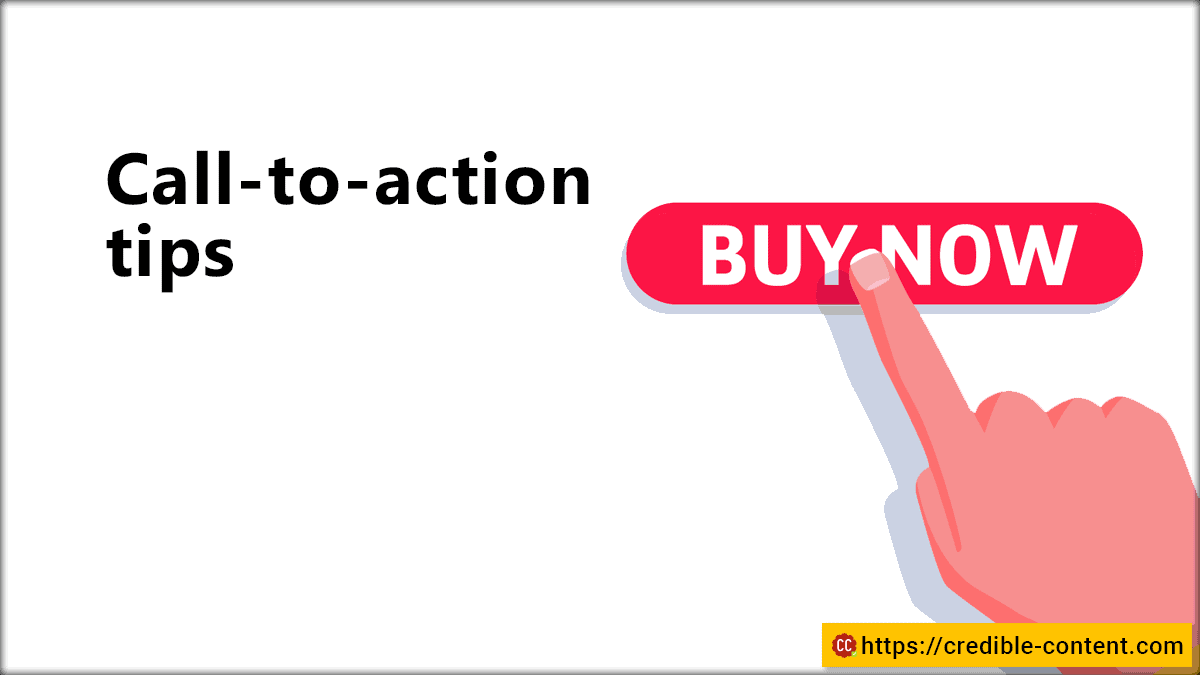Call-to-action is a statement that you make to prompt people to take an action when they are reading your blog post, web page, landing page, or an email. It is also called CTA.
Think it in this manner: why do people come to your website? Why do you want them to come to your website?
If you run a business website (provide app development services) you obviously want people to contact you if they want to develop a mobile app. Almost every page has a Call-to-action button such as “Call us” or “Contact now”.
But simply telling people to contact you isn’t going to make them contact you. Your entire copy must fuel your Call-to-action statement.
Call-to-action can be straightforward (buy my book right now), or it can be subtle – the narrative of your writing moving in such a manner that people want to take an action.
Content Marketing Institute has compiled a list of call-to-action tips to help you supercharge your writing. Some of these tips include
Clearly define your call-to-action goal
You’re CTA isn’t always about making a sale, although, that would be the ultimate goal. Before a sale happens, you need to generate leads. You generate leads by establishing communication channels. How do you establish those channels?
You can ask your visitors to download your white paper or case study. You can ask them to download your e-book. You can encourage them to subscribe to your updates. You can also ask them to visit other portions of your website for further action.
If you define your CTA, it helps you write your content accordingly.
Make contextually relevant offers
Call-to-action must be relevant to the document or the visual your viewer is currently viewing. Suppose I’m writing a blog post on how to write compelling copy and then in the middle of the copy I ask them to download an SEO book. Vaguely they are connected, but directly they are not. Instead, if I ask them to download a small PDF on how to write a compelling copy with more details and data, they will be more eager to download it.
You also need to keep in your mind the intent, both for the content and for the reader/viewer. Is the reader looking for information or is she ready to buy? If she is looking for more information it is better to direct her to the relevant document and if she wants to buy, then it is better to prompt her to buy.
Keep your CTA straightforward
Call-to-action must be an active verb. Use expressions like “Download our White Paper” or “Subscribe to our newsletter” or “Download our mobile app”. These are very clear actions. Avoid using something like “Learn more” because it is very vague and doesn’t tell much what it leads to.
Create a sense of urgency and importance
Instead of saying “Download our mobile app” it is better to say “Download our mobile app now”. Also, use “Call us today” instead of simply “Call us”. Also, something like “Download our custom catalogue specifically for you”. This makes the reader feel unique and special. There is also a sense of urgency.
Avoid using multiple Call-to-action prompts
If you choose too many call-to-action prompts readers begin to ignore them or their eyes get used to them. Use CTA only where you think now is the right time for them to click and do the needful.
Also, keep your CTA brief if you are using a button, because people prefer clicking buttons that are of small size.
Be transparent in your CTA prompts
Don’t needlessly send people to other locations of your website because you want them to stick around. The Call-to-action must be transparent. If it prompts them to download an e-book, they should be able to download it without much fuss. If they need to fill up a form, no matter how small it is, quickly mention that. Avoid using words like “Sign up” or “register” if they need to fill up a form before downloading.
Why should people click?
Can they get a 25% discount – “Avail 25% discount instantly”? Are they going to generate ideas for their blog posts? Is the software going to help them generate quality content? Is it a toolkit they can use to manage their customers and clients? There needs to be a great benefit that your call-to-action offers. Solve a problem. Help them get unstuck. Help them save money.

